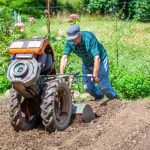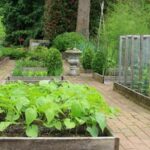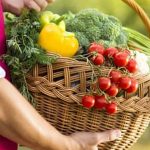Are you interested in starting the best indoor vegetable container gardening? In this article, we will explore the various benefits and techniques of indoor container gardening for growing your favorite vegetables. Whether you have limited outdoor space or simply want to enjoy fresh produce year-round, indoor container gardening can be a rewarding and enjoyable hobby. From choosing the right containers to troubleshooting common issues, we will cover all aspects of successfully cultivating a thriving indoor vegetable garden.
When it comes to indoor container gardening, there are numerous benefits that make it an attractive option for both novice and experienced gardeners. Not only does it allow you to grow fresh vegetables in a limited space, but it also provides greater control over environmental factors such as temperature and sunlight, resulting in healthier plants and higher yields. Additionally, indoor container gardening offers the convenience of easily accessible ingredients for cooking while adding a touch of greenery to your home.
In this article, we will provide valuable insights on how to choose the best containers for your indoor vegetable garden, select the right vegetables for optimal growth, understand the basics of soil, sunlight, and watering requirements, as well as offer tips for maintaining a successful indoor garden. Whether you’re new to gardening or looking to expand your current practices, these techniques and creative ideas will help you embark on a fulfilling journey of indoor vegetable container gardening.
So let’s dive in and discover how you can embrace the joy of growing your own produce indoors.
Choosing the Best Containers for Indoor Vegetable Gardening
When it comes to indoor vegetable container gardening, choosing the right containers is key to the success of your garden. The best containers for indoor vegetable gardening are those that provide adequate space for root growth, proper drainage, and aeration for the soil. For beginners or those with limited space, options such as self-watering containers, fabric pots, or even repurposed items like buckets or plastic storage bins can work well.
One important factor to consider when choosing containers for indoor vegetable gardening is size. Larger vegetables like tomatoes and peppers will need bigger containers, while smaller vegetables like lettuce and herbs can thrive in smaller pots. Additionally, consider the material of the containers – terracotta, plastic, wood, or ceramic – and how they will affect watering frequency and soil temperature.
It’s also important to assess the location where your indoor vegetable container garden will be placed. If you have limited sunlight indoors, consider using lighter-colored containers that won’t absorb as much heat as darker ones. Additionally, if you plan to move your containers around to follow sunlight throughout the day, choose lightweight options that are easy to transport.
| Container Type | Best Vegetables |
|---|---|
| Self-Watering Containers | Tomatoes, Peppers |
| Fabric Pots | Lettuce, Herbs |
| Repurposed Items (e.g. buckets) | Variety of Vegetables |
By considering these factors when choosing containers for indoor vegetable gardening, you can set yourself up for a successful and enjoyable growing experience. The right containers will provide your vegetables with the environment they need to thrive indoors. Whether you opt for traditional pots or get creative with alternative container options, finding the best match for your space and gardening style is essential for a fruitful harvest.
Selecting the Right Vegetables for Indoor Container Gardening
When it comes to indoor vegetable container gardening, selecting the right vegetables is crucial for a successful harvest. Not all vegetables are well-suited for growing in containers, especially indoors where space and lighting may be limited. However, there are several vegetables that thrive in container environments, making them the perfect choice for indoor gardening enthusiasts.
One of the best vegetables for indoor container gardening is tomatoes. Tomatoes come in compact varieties specifically bred for container gardening, making them ideal for small indoor spaces. Another great option is leafy greens such as lettuce, spinach, and kale. These vegetables grow quickly and can be harvested multiple times, providing a continuous supply of fresh produce.
Herbs like basil, parsley, and chives also flourish in containers and are excellent choices for adding flavor to your indoor vegetable garden. Additionally, peppers, radishes, and green onions can also be successfully grown in containers indoors.
| Vegetable | Container Size |
|---|---|
| Tomatoes | 5-gallon pot per plant |
| Lettuce | 8-inch deep container |
| Basil | 6-inch pot |
| Parsley | 8-inch pot |
By choosing the right vegetables and giving them proper care and attention, you can enjoy a bountiful indoor vegetable garden regardless of the limitations of your indoor space.
Understanding the Basics of Indoor Vegetable Gardening
When it comes to successful indoor vegetable container gardening, understanding the basics of soil, sunlight, and watering is crucial. With the right knowledge and practices, you can create a thriving indoor garden that yields an abundance of fresh produce for your culinary creations.
Soil
The foundation of any successful indoor vegetable container garden is the soil. It’s important to use a high-quality potting mix that is well-draining and nutrient-rich. Look for a mix specifically designed for vegetables or create your own blend using components like compost, perlite, and peat moss. It’s also essential to ensure that your containers have proper drainage to prevent waterlogged soil, which can lead to root rot.
Sunlight
One of the key challenges of indoor vegetable container gardening is providing adequate sunlight for your plants. Most vegetables require at least 6-8 hours of direct sunlight per day. If natural light is limited in your home, consider supplementing with grow lights to ensure that your plants receive the light they need to thrive. Additionally, regularly rotating your containers can help promote even growth by exposing all sides of the plant to sunlight.
Watering
Proper watering is vital for the health of your indoor vegetable container garden. Overwatering can lead to issues such as root rot, while underwatering can cause stunted growth and poor fruit development.
The key is to find the right balance based on the specific needs of each type of vegetable you are growing. Check the moisture level of the soil regularly and water thoroughly when it starts to dry out, but be mindful not to let it become bone dry between waterings.
By honing your understanding of these fundamental aspects-soil composition, sunlight exposure, and watering practices-you can set yourself up for success with the best indoor vegetable container gardening experience possible.
Tips for Maintaining a Successful Indoor Vegetable Garden
Maintaining a successful indoor vegetable garden requires attention to detail and consistent care. Here are some tips to help ensure that your indoor container garden thrives and produces bountiful harvests.
Consistent Watering
One of the most important factors in maintaining a successful indoor vegetable garden is consistent watering. It’s essential to keep the soil evenly moist, but not waterlogged. Different vegetables have different watering needs, so be sure to research the specific requirements for each plant in your container garden. Consider investing in a self-watering container or creating a watering schedule to ensure that your plants receive the right amount of moisture.
Proper Lighting
Another key aspect of maintaining a successful indoor vegetable garden is providing adequate lighting. Most vegetables require at least 6-8 hours of direct sunlight each day to thrive. If your indoor space doesn’t receive enough natural light, consider supplementing with artificial grow lights. Position your containers near windows or under grow lights to ensure that your vegetables receive the light they need for healthy growth.
Fertilizing and Soil Maintenance
Regular fertilizing and soil maintenance are essential for keeping your indoor vegetable garden healthy. Use a high-quality organic fertilizer to provide essential nutrients to your plants. Additionally, monitor the condition of the soil in your containers and periodically refresh it by adding compost or other organic matter. This will help replenish nutrients and maintain optimal growing conditions for your vegetables.
By following these tips for maintaining a successful indoor vegetable garden, you can enjoy the satisfaction of growing your own fresh produce year-round, right in the comfort of your own home. With proper care and attention, you’ll soon be harvesting delicious vegetables from your best indoor vegetable container gardening setup.
Troubleshooting Common Issues in Indoor Container Gardening
When it comes to indoor vegetable container gardening, there are some common issues that gardeners may encounter. However, with the right knowledge and a little bit of troubleshooting, these issues can be easily resolved. Here are some common problems and solutions to help you maintain a successful indoor vegetable garden:
1. Overwatering: One of the most common issues in indoor container gardening is overwatering. This can lead to root rot and other diseases in your plants. To prevent overwatering, make sure to check the moisture level of the soil before watering. Use a moisture meter or simply stick your finger into the soil to feel if it’s dry or moist. Only water your plants when the top inch of soil is dry.
2. Insufficient Light: Indoor vegetable plants require adequate sunlight to thrive. If you notice that your plants are not growing well or are becoming leggy, they may not be getting enough light. To remedy this issue, consider moving your containers closer to a bright window or providing supplemental grow lights to ensure that your plants receive the necessary amount of light.
3. Pest Infestation: Another common problem in indoor vegetable gardening is pest infestation, such as aphids, mites, or whiteflies. To prevent and control pests, regularly inspect your plants for any signs of infestation and remove any affected leaves or stems. You can also use natural remedies like neem oil or insecticidal soap to combat pests without harming your plants.
By being proactive and addressing these common issues in indoor container gardening, you can ensure that your vegetable garden thrives and produces bountiful harvests throughout the year.
Creative Ideas for Vertical and Hanging Indoor Vegetable Gardens
Vertical and hanging indoor vegetable gardens are perfect for those with limited space but still want to enjoy the benefits of growing their own fresh produce. With the right creativity and equipment, you can transform any small corner of your home into a flourishing vegetable garden. Here are some creative ideas for setting up vertical and hanging indoor vegetable gardens:
- Vertical Garden Tower: Utilize a vertical garden tower to grow a variety of vegetables in a compact space. This freestanding structure allows you to stack multiple tiers of planting containers, maximizing your growing capacity without taking up much floor space.
- Hanging Baskets: Hang sturdy baskets from the ceiling or on hooks attached to a wall to create an eye-catching display of trailing vegetables such as cherry tomatoes, peppers, and strawberries. Make sure to use baskets with proper drainage to prevent waterlogging.
- Wall-Mounted Planters: Install wall-mounted planters in your kitchen or living room to add greenery while also providing easy access to fresh herbs and leafy greens for cooking.
By incorporating these creative ideas into your indoor vegetable container gardening plans, you can make the most out of limited space and enjoy a bountiful harvest throughout the year. Remember to consider factors such as light exposure, watering needs, and proper support structures when implementing these creative ideas for vertical and hanging indoor vegetable gardens.
Harvesting and Enjoying the Fruits of Your Indoor Vegetable Container Garden
Once you have successfully grown your indoor vegetable container garden, it’s time to enjoy the fruits of your labor. Harvesting your vegetables at the right time is essential to ensure that they are at their peak flavor and nutrition. One of the best things about indoor vegetable container gardening is being able to harvest fresh produce right from your own home, any time of year.
To ensure the best flavor and nutritional content, it’s important to harvest your vegetables when they are ripe. Different vegetables have different indicators of ripeness, so it’s important to do some research on each specific type you are growing. Generally, you can tell a vegetable is ready for harvest when it reaches its full size and color, such as tomatoes turning red or peppers changing from green to their designated color.
After harvesting your vegetables, be sure to properly store them to maintain their freshness. Some vegetables can be stored at room temperature, while others do best in the refrigerator. Store root vegetables like carrots and potatoes in a cool, dark place with good ventilation. Herbs can be dried or frozen for later use. By properly storing your harvested vegetables, you can continue to enjoy the rewards of your indoor vegetable container garden for weeks or even months after harvesting.
Conclusion
In conclusion, indoor vegetable container gardening can be a fulfilling and rewarding experience for many individuals. The ability to grow your own fresh produce right in the comfort of your home has numerous benefits, including access to healthy and organic vegetables, regardless of limited outdoor space or unfavorable weather conditions. By carefully choosing the best containers, selecting the right vegetables, understanding the basics of indoor gardening, and implementing maintenance tips, anyone can successfully cultivate a thriving indoor vegetable garden.
As we have explored throughout this article, indoor vegetable container gardening allows for creativity and flexibility in utilizing vertical and hanging gardening methods to maximize space and create visually appealing displays. Additionally, troubleshooting common issues such as pests, diseases, and environmental factors can be manageable with proper knowledge and proactive measures. Ultimately, embracing the joy of indoor vegetable gardening means reaping the rewards of your hard work by harvesting and enjoying your homegrown produce with pride.
In embracing the joy of indoor vegetable gardening, it is important to appreciate the sense of accomplishment that comes with nurturing plants from seeds or seedlings into full-grown vegetables ready for harvest. The satisfaction of knowing exactly where your food comes from and having control over its growth process is immeasurable.
Whether you are a seasoned gardener or just starting out on your gardening journey, exploring the world of best indoor vegetable container gardening opens up endless possibilities for delicious homegrown produce right at your fingertips.

If you’re looking to get into vegetable gardening, or are just looking for some tips on how to make your current garden better, then you’ve come to the right place! My name is Ethel and I have been gardening for years. In this blog, I’m going to share with you some of my best tips on how to create a successful vegetable garden.





